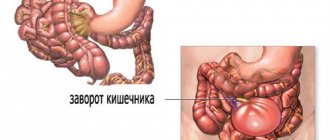Adrenogenital syndrome (AGS) is a complex of disorders in the production of corticosteroids.
Such disorders are inherited in an autosomal recessive manner, so the syndrome can occur in both sexes with equal frequency. The probability of having a child with this syndrome when both parents are carriers of the pathological gene reaches 25%, in a marriage between a carrier and a patient – 75%. If one of the parents has complete DNA, clinical manifestations of the syndrome do not develop in children. If the father and mother have ADS, the child will also be sick. Approximately 1 in 10,000 children are born with this pathology.
Causes of adrenogenital syndrome
In 90-95% of cases, pathology occurs when the active CYP21-B gene, which is responsible for the synthesis of 21-hydroxylase, an enzyme that affects the formation of cortisol, is damaged. In other clinical cases, AGS develops due to DNA defects that disrupt the production of other enzymes that ensure steroidogenesis - StAR/20,22-desmolase, 3-β-hydroxysteroid dehydrogenase, 17-α-hydroxylase/17,20-lyase, 11-β -hydroxylase, P450 oxidoreductase and aldosterone synthetase.
The following types of adrenogenital syndrome are distinguished:
- salt wasting type. Manifestations of the disease begin to be detected from the first weeks of life. In girls, the genital organs are formed according to the male type, and in boys, the penis and scrotum are enlarged. Due to a gross disruption of the formation of steroid hormones, severe vomiting, diarrhea, convulsions develop, and the skin darkens. Progressive dehydration leads to death in the absence of timely replacement therapy.
After 2-3 days from the onset of clinical manifestations of the disease, symptoms of dehydration and the development of metabolic acidosis appear.
- Simple virile. Developmental disorders of the genital organs predominate. In girls: an enlarged clitoris, similar to a penis; the entrance to the vagina is deepened; labia larger than normal; the uterus and appendages are formed. In boys: the penis is enlarged, the skin of the scrotum has dark pigmentation. Girls are broad-shouldered, with a narrow pelvis, shortened and massive limbs. They have a low voice, an Adam's apple on their neck, and their mammary glands do not grow. Boys develop early coarse hair on their chin and upper lip, and their voice breaks.
As patients age, signs of virilization increase due to the stimulating effect of androgens. Typically, puberty begins at 3-5 years of age.
- Postpubertal type. Identified at a young age. The acquired form occurs after the appearance of a tumor in the adrenal glands or when they are overactive.
The genitals correspond to the sex, but hypertrophy of the clitoris and penis develops. The main disorders occur in women - menstruation decreases or stops (after stress, trauma, abortion, miscarriage). The onset of the first menstruation can only occur at the age of 15, the cycle is extended (more than 30-40 days). The skin is prone to increased oiliness and acne formation, and there is increased hair growth. During the examination, hyperplasia of the adrenal cortex is detected.
- There are also variants of the non-classical course of adrenogenital syndrome - with high blood pressure, with fever, lipid (obesity, cholesterol metabolism disorder), with hirsutism (increased hair growth on the body and face, along the midline of the abdomen, near the nipples).
Where can hormonal disorders be diagnosed and treated in St. Petersburg
Such diseases can only be treated in a specialized clinic. In St. Petersburg, endocrinologists from the endocrinology department of the Diana Clinic treat hormonal problems in women and men. The cost of seeing a specialist is affordable and does not exceed 1000 – 1500 rubles. Here you can take all hormone tests and undergo other studies.
Or sign up by phone: 8-800-707-15-60 (toll-free)
If you find an error, please select a piece of text and press Ctrl+Enter
Methods for diagnosing adrenogenital syndrome
Diagnosis depends on the form and clinical manifestations and possible complications of the disease.
Diagnosis during intrauterine development When examining pregnant women, the possibility of adrenal hyperplasia may be indicated by abnormal formation of the fetal genital organs. This can be seen on the second screening obstetric ultrasound. In such cases, additional examination is recommended, an amniotic fluid test is prescribed, or after 21 weeks, fetal blood is taken (from the umbilical cord under ultrasound guidance).
Diagnosis after childbirth
After childbirth, diagnosis is not difficult. An examination is prescribed: an ACTH test - there is no increase in cortisol levels after its administration; blood test - reduced sodium, increased potassium, 17 OH-progesterone 5-7 times or more, androstenedione (precursor of steroids), renin (in the salt-losing form); urine test - high concentration of 17-ketosteroids, after taking prednisolone it is reduced by half. In doubtful cases, karyotyping is used to confirm the female karyotype (46XX). Study of mutations in the CYP11B1 gene - sequencing to identify mutation - His R448H.
Diagnosis of late clinical onset
The diagnostic search becomes more important in cases of late clinical onset or latent course with minimal external manifestations of virilization. In such situations, the following laboratory and instrumental methods are used to identify adrenogenital syndrome:
- hormonal profile (cortisol and precursors, 17-OHP, DHEA-c and DHEA, ACTH, etc.);
- radiography of the hand bones (early completion of growth);
- Ultrasound of the pelvic organs (signs of anovulatory cycle), adrenal glands (hyperplasia); in some cases, MRI or MSCT examination is prescribed;
- measurement of basal temperature. The temperature curve is typical for the anovulatory cycle: the first phase is extended, the second is shortened, which is due to the insufficiency of the corpus luteum, which is not formed due to the lack of ovulation).
Differential diagnosis of adrenogenital disorders that arise during puberty and childbearing age is carried out with polycystic ovary syndrome, ovarian androblastomas, adrenal androsteromas, virile syndrome of hypothalamic origin and constitutional hirsutism. In difficult cases, endocrinologists, urologists, and geneticists are involved in diagnosis.
Sign up for diagnostics To accurately diagnose the disease, make an appointment with specialists from the Family Doctor network.
Read and take note, especially if you are young people
In Russia, mass examination of newborns has been carried out for many years to identify several hereditary diseases. This examination is carried out in many countries and is called newborn screening or neonatal screening.
The purpose of newborn screening is, of course, not the identification of newborns with not yet manifested hereditary diseases, but their treatment, which helps prevent the appearance of clinical symptoms, in many cases very severe, or even fatal. As a result of early and carefully carried out treatment, instead of seriously ill children, and then adolescents and adults, healthy people are obtained, full-fledged members of society, often the pride of the family.
Newborn screening in Russia is carried out for 5 hereditary and congenital diseases: phenylketonuria, hypothyroidism, galactosemia, adrenogenital syndrome and cystic fibrosis.
WHAT IS ADDRENOGENITAL SYNDROME?
Adrenogenital syndrome (abbreviated as AGS) is a hereditary disease that is caused by a disorder (mutation) in a specific gene. Such a gene is called mutant. Synonyms for AGS are congenital adrenal hyperplasia and 21-hydroxylase deficiency. Screening of newborns for AGS in Russia is just beginning and therefore its frequency is still unknown. In other countries it ranges from 1:10,000 to 1:20,000 newborns.
WHY CAN A CHILD GET SICK WITH ADRENOGENITAL SYNDROME?
With AHS, the function of the adrenal glands is impaired. The adrenal glands are endocrine glands, i.e. glands that produce hormones, they are located next to the kidneys. The adrenal glands produce various hormones that are absolutely necessary for the normal development and functioning of the body. Among the adrenal hormones, the synthesis or transformation of which is impaired in AGS, the most important are the following: cortisol - a hormone necessary for the body to respond normally to stress or infection; aldosterone is a hormone necessary to maintain normal blood pressure and normal kidney function; androgens are hormones that are needed for normal growth and proper formation of the male and female genital organs. People with AHS most often have a deficiency of an enzyme called 21-hydroxylase. As a result, the conversion of cholesterol into cortisol and aldosterone, which is controlled by this enzyme, is disrupted. At the same time, the accumulation of precursors of cortisol and aldosterone occurs, which normally turn into male sex hormones - androgens. Since a lot of cortisol and aldosterone precursors accumulate during AGS, significantly more androgens are formed than normal, which is the main cause of the clinical picture of AGS.
WHAT DISORDERS IN THE BODY CAN ADDRENOGENITAL SYNDROME CAUSE?
There are several forms of AGS, but in approximately 90% of cases it is caused by a deficiency of the enzyme 21-hydroxylase. In turn, three forms of 21-hydroxylase deficiency are clinically distinguished. Two of them are called classic. One is known as the simple virilizing form, which is caused by excess androgens, which leads to excessive masculinization, i.e. to excessive manifestation of male sexual characteristics. This is most noticeable in girls due to the excessive development of the external genitalia immediately after birth. At the same time, the development of the internal genital organs (uterus and ovaries) in such girls occurs normally. The second classic form is called salt-losing. It is associated with insufficient synthesis of aldosterone, a hormone necessary for the return of salt through the kidneys into the bloodstream. In the third form of 21-hydroxylase deficiency, which is called non-classical, signs of excessive masculinization appear in girls and boys after birth.
The most life-threatening and most common is the salt-losing form of AGS. If treatment is not prescribed on time, the child may die. In other forms of AHS, children grow quickly and develop secondary sexual characteristics very early, in particular pubic hair growth.
HOW IS ADRENOGENITAL SYNDROME INHERITED?
Adrenogenital syndrome is inherited in an autosomal recessive manner, i.e. Sick people in a family accumulate in one generation. The scheme of such inheritance is shown in the figure, which shows a fragment of the pedigree of the family in which a child with AGS was born. On the pedigree, men are indicated by a square, and women by a circle. Inside these squares and circles, only one chromosome is drawn out of the 23 pairs that a person has. This chromosome contains a normal or mutant gene for adrenogenital syndrome, the latter is marked with a black dot.
For simplicity, the figure shows only the chromosome containing the gene in which mutations cause AGS. The child has a mutant gene on both chromosomes and is therefore sick. Each of the parents has a mutant gene on only one chromosome, and the second chromosome is normal and therefore they are healthy. Such people are called carriers of the mutant gene. The maternal grandmother also has the mutant gene on only one chromosome, just like the paternal grandfather. They, like the child’s parents, are healthy, but they passed on chromosomes containing the mutant gene to their children. In the second grandfather and grandmother, both chromosomes contain only the normal gene. Thus, with recessive inheritance, only the family member who received both chromosomes carrying the mutant gene from his parents is sick. All other family members are healthy, including those who are carriers of the mutant gene.
The presented figure shows that parents of a sick child may still have sick children. The probability of having a sick child in families in which the parents are carriers of the mutant gene is 1/4, or 25%. This probability does not change depending on the number of sick or healthy children in the family: for each subsequent child, the risk that he will be sick is 25%. The probability of having a healthy child, both chromosomes of which contain only a normal gene, is also 25%. The probability of having children who have one normal and one mutant gene, i.e. healthy carriers is 50%. Many parents of sick children and their relatives, having met with a geneticist for the first time, persistently repeat that their child does not have a hereditary disease, since no one in their family has ever had such a disease. And only a detailed and accessible explanation that the rules of inheritance are different allows parents to understand the situation they are faced with.
WHAT IS NEWBORN SCREENING FOR ADRENOGENITAL SYNDROME?
To avoid the development of such severe clinical manifestations of adrenogenital syndrome, it is necessary that the newborn be tested for this syndrome in the first days after birth. This is why newborn screening programs exist. Screening begins with the fact that a few drops of blood are taken from the newborn’s heel on the 4th - 5th day of life before being discharged from the maternity hospital, which is applied to special filter paper. The blood is dried, and a form containing the name of the newborn and a number of other information necessary for its identification is sent to the laboratory of the regional medical genetic consultation. The laboratory conducts a special test that allows us to identify newborns who are suspected of having AHS. In this case, the laboratory now requests from the pediatric service, since the newborn has been discharged from the maternity hospital, a repeated blood draw. Usually at this time, parents learn from the pediatrician that their child's first test for adrenogenital syndrome was abnormal. They have a reason to worry. Repeated testing of the infant's blood sample is critical. In some cases, upon repeated examination, the level of the 21-hydroxylase enzyme turns out to be normal. This means that the result of the first study was incorrect (it is called a false positive). The reasons for this may be related to both the condition of the baby and some error in the laboratory. This result, indicating that the child does not have AGS, is immediately communicated to the parents, and they can be reassured.
WHAT TO DO IF THE DIAGNOSIS OF ADRENOGENITAL SYNDROME IS CONFIRMED BY SCREENING?
If during the second test the level of the 21 hydroxylase enzyme in the blood remains low, this means that the child has adrenogenital syndrome, and the family is immediately invited to a medical genetic consultation. Here parents are explained what this disease is and the child is referred to a qualified endocrinologist, who prescribes treatment and monitors the child in the future. AGS is treated with daily cortisol and sometimes aldosterone. If treatment is started early, then the clinical symptoms of AHS will not appear in the child, and he will grow up healthy, no different from his peers. Periodically, the family will need to visit an endocrinologist, especially if the child has any illness, injury, etc., since these are all stressful situations, and an increase in the dose of cortisol, which is a stress hormone, may be required.
IS IT POSSIBLE TO HELP A FAMILY IN WHICH HAS A PATIENT WITH ADRENOGENITAL SYNDROME HAVE HEALTHY CHILDREN?
Yes, and quite successfully. For AGS, prenatal diagnosis is possible. The first step in this direction is to contact a medical genetic consultation, where a geneticist determines the indications and possible methodological approaches to prenatal diagnosis. In each specific case, the issue of the need for a molecular genetic examination of the sick child or parents, and then the fetus, is decided. The procedure itself is that during pregnancy at 9-11 weeks or 16-18 weeks, an obstetrician-gynecologist takes a very small number of fetal cells located in the amniotic fluid, membranes or fetal blood, and sends this material to a special prenatal diagnostic laboratory. In this laboratory, laboratory geneticists perform molecular genetic diagnostics, i.e. determine the presence or absence of a mutation in the gene responsible for AGS. If the result is positive, the family decides to terminate the pregnancy with a sick fetus or prepare for the appearance of another sick child. This right of choice remains with the family.
Reviews
Svetlana: My daughter was diagnosed with CHD. She is now three years old. Replacement therapy is a constant and important stage in treatment. So far, all anthropometric criteria are normal. The endocrinologist says that the dose of hormones should not be increased yet, and in stressful situations he said to administer hydrocortisone intramuscularly.
Maria: The child was diagnosed with AHS in utero, and treatment was started on time. Immediately after the birth, we went to a paid clinic, had an operation, and are now taking the prescribed medications. Doctors say everything will be normal and pregnancy is possible in the future.
Development mechanism
The occurrence of congenital adrenal hyperplasia is associated with inhibition of the production (production) of some corticosteroid hormones while simultaneous activation of the production of others. This occurs due to a lack of one or another enzyme that is involved in steroidogenesis (the production of corticosteroids). The main pathogenetic mechanism of AGS is congenital deficiency of the enzyme C 21-hydroxylase.
Depending on the degree of enzyme deficiency, aldosterone and cortisol deficiency develops. The lack of the latter, as a type of negative feedback, stimulates the production of adrenocorticotropic hormone (ACTH), which affects the adrenal cortex and leads to its hyperplasia. As a result of this, corticosteroids are synthesized above normal, i.e., steroidogenesis shifts towards androgen excess.
The mechanism of development of the disease lies in the excessive production of some corticosteroid hormones with a decrease in the production of others
The body develops hyperandrogenism of adrenal origin. Increased production of androgens has a virilizing effect on the child even in the prenatal period. Subsequently, the classic (congenital) form of the disease develops. Clinical manifestations depend on the degree of activity of the mutated CYP21-B gene. With a complete lack of activity, a salt-wasting form of the syndrome is formed, in which the production of both mineralocorticoids and glucocorticoids is disrupted.
Adrenal glands and their function
The adrenal glands are paired organs that are located at the upper poles of the kidneys. Each gland is covered by a dense membrane (capsule), which penetrates inside and divides the organ into two layers: the cortex (outer layer) and the medulla (inner layer). The cortex synthesizes corticosteroids:
- glucocorticoids (corticosterone, cortisone) – regulate all metabolic processes;
- mineralocorticoids (aldosterone) – regulates the potassium-sodium balance;
- sex hormones.
The medulla is responsible for the production of catecholamines (adrenaline and norepinephrine). Adrenaline increases the frequency and force of heart contractions. Norepinephrine maintains vascular tone.
Prevalence of the disease
The prevalence of AHS varies among different ethnicities. Among Caucasians, the classic variants of congenital adrenal hyperplasia account for one case in 14,000 newborns (1 in 9,800 in Sweden, 1 in 11,000 in the USA). In Japan, the incidence is 1 case in 18,000 births. Among isolated populations, the prevalence of AGS is 5–10 times higher than average. Thus, among the Eskimos of Alaska, the prevalence of classical variants of the disease is approximately one case per 282 newborns.
Treatment
In the classic form, children are prescribed Hydrocortisone tablets (daily dose 15–20 mg/m2 of body surface) or Prednisolone at a dosage of 5 mg/m2. The daily dosage is divided into two doses: a third of the dose in the morning and two-thirds before bedtime. This allows you to maximally suppress the production of ACTH by the pituitary gland. If the second phase of the cycle is incomplete, stimulation of ovulation is required from the fifth to the ninth day of the cycle, which significantly increases the chances of pregnancy.
If pregnancy has occurred, glucocorticosteroids should be continued to prevent spontaneous miscarriage. For salt-wasting AGS, fludrocortisone is prescribed (50 to 200 mcg/day). If there are severe concomitant diseases or surgery has been performed, the dose of glucocorticoids is increased. When the diagnosis of the virile form of AGS is made late in patients with a genetically female gender, surgical intervention is performed aimed at plastic surgery of the external genitalia.
The non-classical form of the disease requires treatment only for severe external problems (acne, hirsutism) or decreased fertility. In this case, 0.25-0.5 mg of dexamethasone or up to 5 mg of prednisolone is prescribed before bedtime.
Hormone therapy is the mainstay of treatment
Acne and hirsutism are effectively corrected with the help of antiandrogens (cyproterone) together with estrogens (as part of oral contraceptives). Spironolactone has an antiandrogenic effect. The drug is taken 25 mg twice a day. Using spironolactone for six months reduces testosterone levels by 80%.
Hypertrichosis is also reduced by synthetic progestins, but women with congenital adrenal hyperplasia should not use them for a long time (according to the recommendations of doctors, suppression of gonadotropins is undesirable in case of depressed ovarian function). Men with the non-classical type of the disease do not receive treatment.









